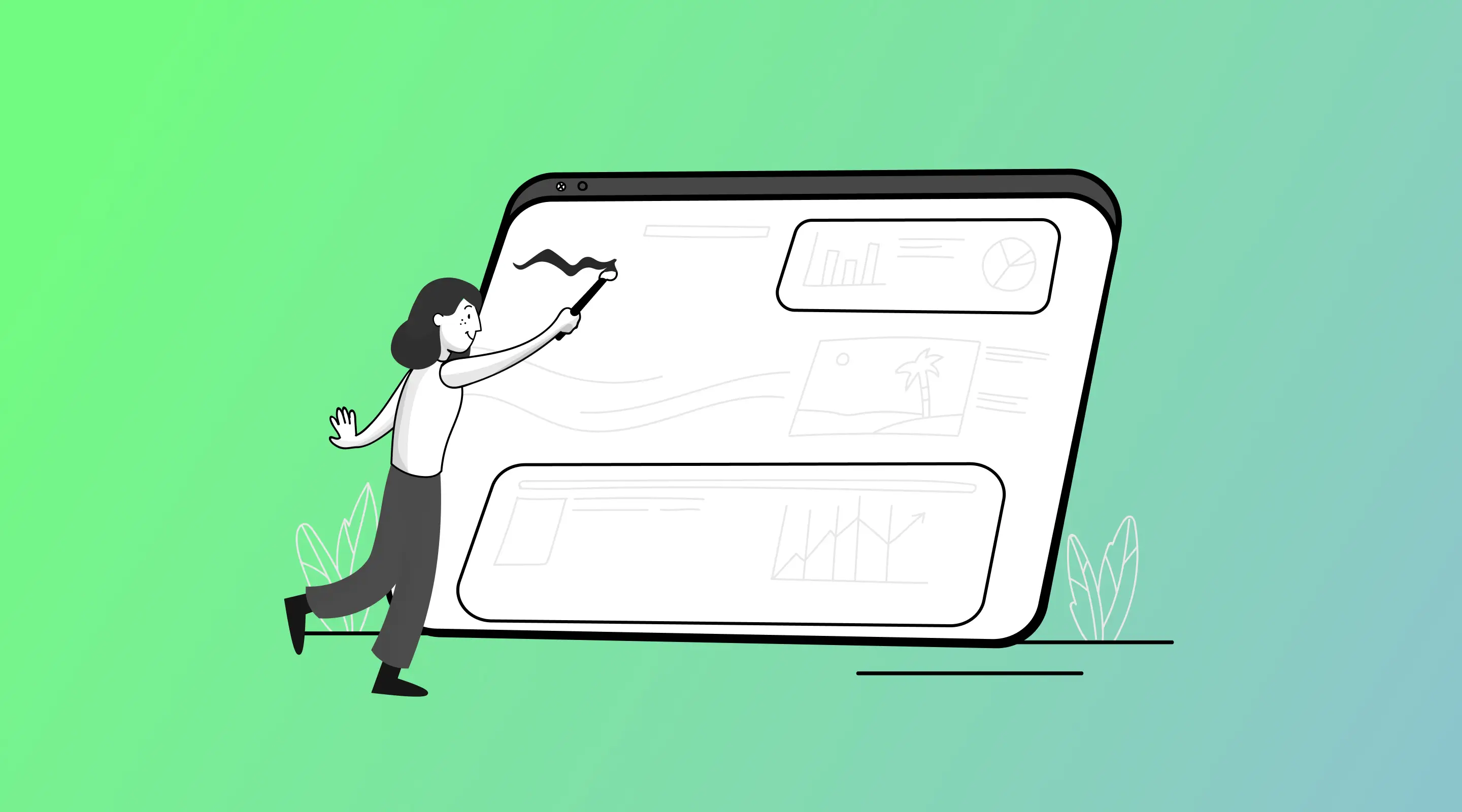Landing Page Optimisation: Best Practices
Actionable landing page optimisation strategies to reduce bounce rates, boost conversions, and improve ROI for your business.

You’ve spent money driving traffic through ads, SEO, and social campaigns yet the leads aren’t rolling in. The culprit? Your landing page.
Landing page optimisation (LPO) is the process of fine-tuning design, copy, and user experience to turn more visitors into customers. A few tweaks can be done: a sharper headline, faster load time, a more persuasive CTA can double or even triple your conversion rates.
In this article, we’ll break down the proven strategies for landing page optimisation, blending strategic insight with practical tactics. You’ll learn how to reduce bounce rates, boost ROI, and discover the tools that make optimisation effortless. Whether you’re a marketer, business owner, or SaaS founder, these best practices will help you convert clicks into customers.
What is Landing Page Optimisation?
Landing page optimisation is the practice of adjusting and improving individual web pages so they convert better; whether that means collecting email addresses, booking demos, or closing sales.
Unlike general website optimisation, LPO focuses on single-purpose pages with one clear call-to-action. When done well, it:
- Increases conversions
- Reduces wasted ad spend
- Builds trust with prospects
- Creates a seamless user journey
Think of it as upgrading a shop window: every word, image, and layout choice is designed to convince passers-by to walk in and buy.
Why Landing Page Optimisation Matters
Reducing Bounce Rate Through UX Design
Landing pages are about keeping people from leaving. Reducing bounce rate through UX design means:
- Clear navigation and hierarchy
- Immediate value proposition above the fold
- Fast loading times, especially on mobile
Every extra second of page load increases bounce by 32%. Good UX doesn’t just look polished — it convinces visitors to stay and act.
ROI Impact & Conversion Rates
High-performing landing pages can slash cost-per-lead and maximise ad ROI. Instead of pouring more money into traffic, optimising your existing page ensures every click works harder.
Landing Page Optimisation Best Practices
1. Align Messaging with Ads (Message Match)
Your landing page headline should match the promise of the ad. If someone clicks on “Free SEO Audit”, your page must deliver exactly that. Tools like Unbounce make syncing ads with tailored landing pages effortless.
2. Prioritise Above-the-Fold Content
Headline, USP, and CTA need to be visible without scrolling. Visitors decide in seconds whether to stay — make your offer unmissable.
3. Use Visual & Directional Cues
Arrows, pathways, or even eye gaze in photos can guide visitors directly to your CTA button.
4. Showcase Product or Service in Action
Use lifestyle images or explainer videos to help people picture themselves using your solution. Video can increase conversions by up to 80%.
5. Eliminate Distractions (No Navigation)
Navigation bars and unrelated links give users an escape route. Strip them out so your CTA is the only option.
6. Build Trust with Social Proof
Embed testimonials, reviews, or case studies. Trust badges (like secure checkout icons or partner logos) reinforce credibility.
7. Write Clear, Compelling Copy
Keep it short, benefit-driven, and scannable. Bullets > blocks of text.
8. Ensure Fast Page Speed
Mobile visitors won’t wait. Aim for under 3 seconds load time. Use compression tools, lightweight code, and CDNs.
9. Mobile-First Design
Over 60% of users browse on mobile. Responsive design isn’t optional anymore.
10. Continuous Testing & Iteration
Your first landing page is never your best. Use A/B testing platforms like Optibase or VWO to experiment with headlines, layouts, and CTAs.
11. Leverage Proven Templates
Why reinvent the wheel? Templates from Instapage or Leadpages are tested for conversions — customise them for faster results.
Conversion Rate Optimisation Through UX
Optimisation is about more than headlines and colours. Conversion rate optimisation through UX focuses on:
- Minimising friction in forms
- Structuring layouts that guide users naturally
- Creating copy that answers objections before they arise
This is where design and data collide: thoughtful UX design transforms visitors into buyers.
Common Mistakes to Avoid in Landing Page Optimisation
- Overloading with information – clutter confuses and kills conversions.
- Weak CTAs – “Submit” doesn’t sell; “Get My Free Audit” does.
- Ignoring mobile responsiveness – you’ll lose over half your audience.
- Not testing regularly – assumptions don’t convert, testing does.
Many businesses burn thousands in ad spend by making these mistakes. Partnering with a CRO-focused agency or using a dedicated platform can eliminate these errors fast.
Tools & Resources for Landing Page Optimisation
The right tools speed up optimisation and deliver data-backed results:
- A/B Testing: Optibase, Optimizely, VWO
- Analytics: GA4, Hotjar, Crazy Egg (heatmaps)
- Builders: Unbounce, Instapage, Leadpages, Webflow
Pro Tip: Most of these offer free trials — perfect for testing without commitment.
Frequently Asked Questions
What is the goal of landing page optimisation?
To increase conversions by refining design, copy, and UX — turning visitors into customers.
How do I test if my landing page is effective?
A/B test your headlines, CTAs, and layouts. Use heatmaps to see where visitors drop off.
How many CTAs should a landing page have?
One main CTA for clarity, with optional supportive CTAs (e.g. footer button).
How important is mobile optimisation?
Critical — over 60% of traffic is mobile. Neglect it, and you’re losing customers.
How long should a landing page be?
As long as it needs to answer objections and drive action — but keep it concise, scannable, and user-focused.
Conclusion
Landing page optimisation is the fastest, most cost-effective way to improve ROI. By combining smart UX, clear messaging, and continuous testing, you can dramatically reduce bounce rates and convert more visitors.
Start today: run an audit on your current page, apply these best practices, and test with tools like Unbounce or Instapage. Better yet, partner with a CRO-focused agency to unlock conversions you’re leaving on the table.
{{build-better-experience="/directory"}}
Related Articles

How To Be a Great Website Designer in Singapore
In this guide, we’ll explore the essential skills, tools, and strategies to help you excel as a website designer in Singapore.

Apps You Can Integrate with Webflow
Find out about the apps that you can use in Webflow to enhance your design process

How To Create An Effective Website Localisation
Take a look at the benefits of website's localisation and how you can optimize your global outreach with Webflow's Localization Module
Launch Your Next Website.
Schedule a call with us if you think that we can help you. The least we can do is to give you good advice.

